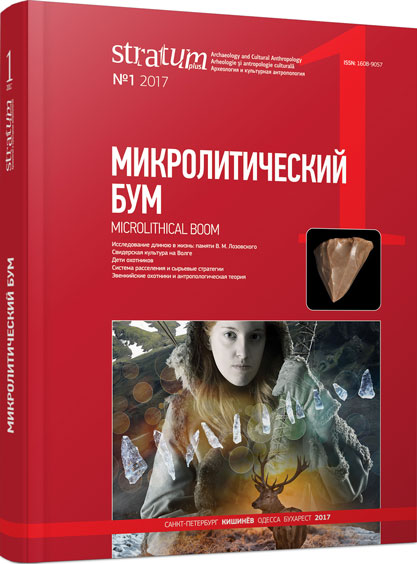Специфический способ подготовки зоны расщепления нуклеусов в начальном верхнем палеолите Южной Сибири и Центральной Азии
Specific Technique of Core Platform Preparation in the Initial Upper Palaeolithic of South Siberia and Central Asia
Author(s): Vyacheslav S. Slavinskiy, Evgeny P. Rybin, Natalia E. Belousova, Alexander Yu. Fedorchenko, Arina M. Khatsenovich, Anton A. AnoikinSubject(s): History, Anthropology, Archaeology
Published by: Издательский дом Stratum, Университет «Высшая антропологическая школа»
Keywords: South Siberia; Central Asia; Initial Upper Palaeolithic; microwear analysis; lithic technology; blade production; picketage
Summary/Abstract: Initial Upper Palaeolithic industries of South Siberia and Central Asia are dated to 35,000—50,000 14C years BP. They have been identified in Russian Altai, Eastern Kazakhstan, Transbaikalia, Mongolia, Dzungaria and Ordos in the north of China. This paper deals with the materials from Mountain Altai (Kara-Bom and Ust-Karakol 1), Eastern Kazakhstan (Ushbulak-1) and Northern Mongolia (Tolbor 4). The traceological analysis and the stydy of core platform morphologies have shown that the technology of large blade production included a combination of several methods of fracture zone preparation. The preparation of striking platforms and flaking surfaces was done by means of consequtive overhang removal and/or reverse plarform reduction and picketage. This technique is characteristic of the Initial Upper Palaeolithic industries of South Siberia and Central Asia and can be regarded as a feature specific for this cultural unity.
Journal: Stratum plus. Археология и культурная антропология
- Issue Year: 2017
- Issue No: 1
- Page Range: 221-244
- Page Count: 24
- Language: Russian
- Content File-PDF

